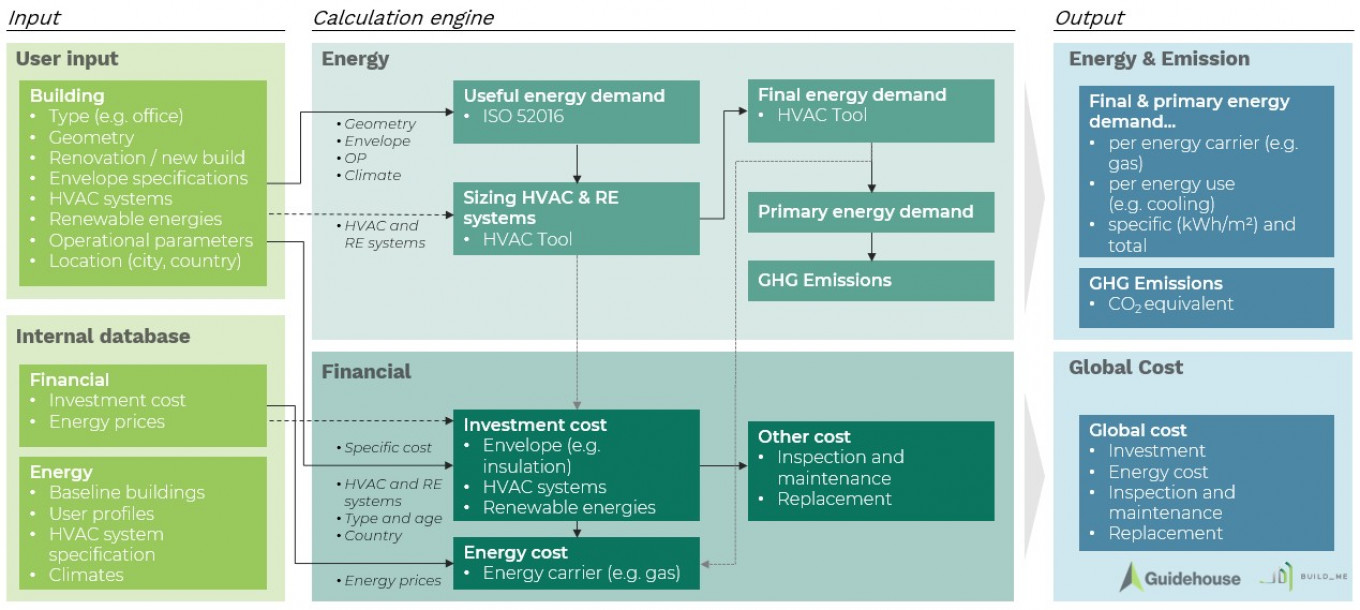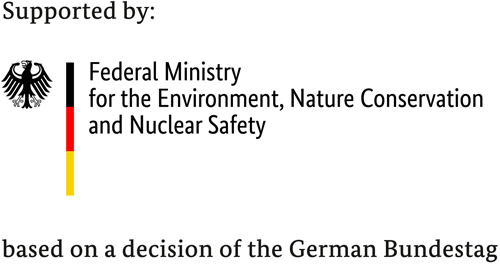Building Energy Performance Tool
Buildings Energy Performance Tool is now live! Click here to explore the tool.
International building certification schemes are scarcely applied in the MENA region because they:
- are too expensive.
- focus on sustainable construction and not on energy performance.
- do not respond well to the market conditions in the MENA region.
To apply for financial support from banks (e.g. via loans and grants), project developers need evidence proving that the planned activities sufficiently reduce the energy demand of the buildings. This building energy performance (BEP) Tool provides relevant actors in the MENA region a free, usable software tool to calculate the overall energy performance of buildings and the cost-effectiveness of building energy efficiency measures. [Disclaimer: The tool calculates the energy and economic performance currently for projects in Egypt, Jordan and Lebanon. Other MENA countries might be considered in the future.]
Guidehouse’s building energy performance (BEP) model has been used in many international projects, delivering realistic results based on a solid, internationally applicable methodology. The model’s calculation core is based on ISO 52016 – Energy efficiency of buildings - energy requirements for heating and cooling, indoor temperatures and sensitive and latent heat loads, an international standard. ISO 52016 is the most up-to-date standard for calculating building energy requirements and best matches the requirements of the BUILD_ME project.

BUILD_ME’s online BEP tool, based on Guidehouse’s model, contains modules covering all relevant aspects that influence the energy performance of buildings and the life cycle costs of energy efficiency measures (see figure below). The tool calculates the energy demand for space heating and space cooling on an hourly basis for each hour of the year, leading to 8,760 individual calculations using hourly climate data. The hourly climate data is extracted from METEONORM. The BEP tool considers local climatic conditions as well as exact building specifications such as the geometry and orientation of surfaces before applying the complex calculations of the standard. Per ISO 52016, the energy demand calculation is supplemented by a calculation module for the technical building systems to calculate the final energy demand for space heating, space cooling, and hot water generation. Taking into account national primary energy and emissions factors, the tool converts the final energy demand into primary energy demand and greenhouse gas (GHG) emissions.
For any questions related to the BEP Tool, please contact BUILD_ME@guidehouse.com.




